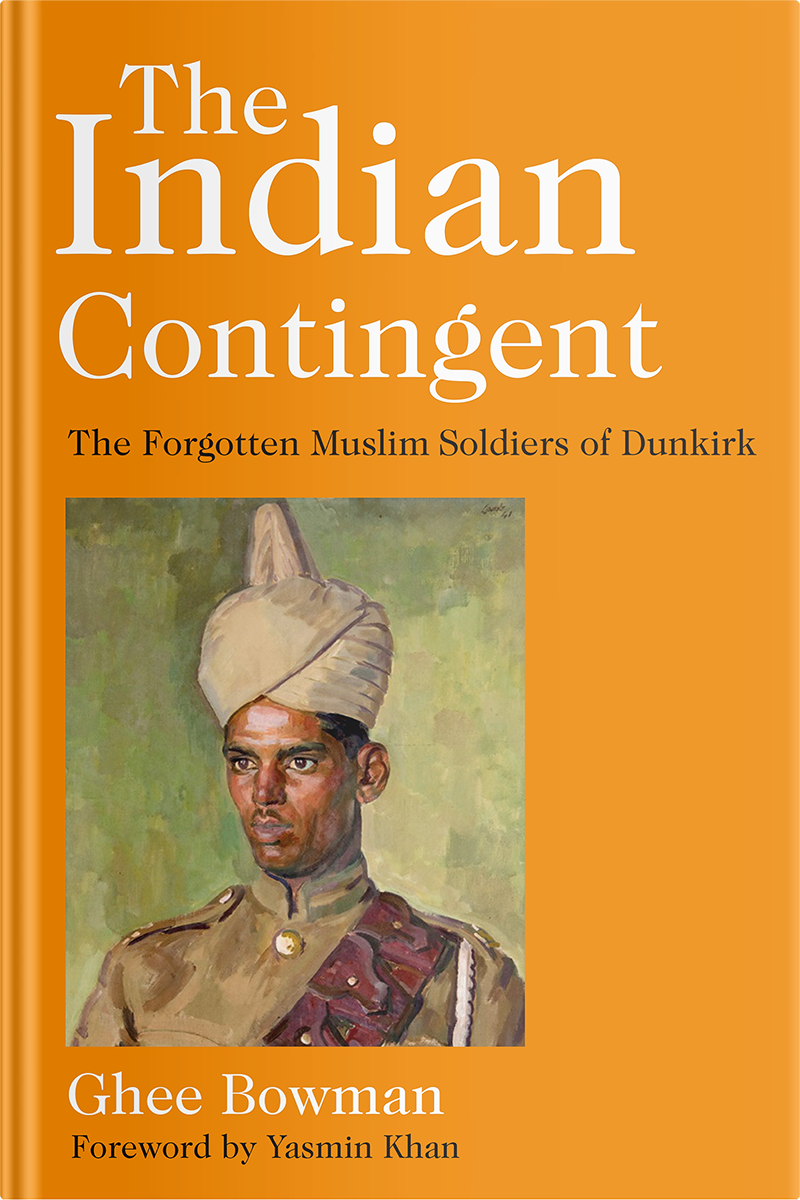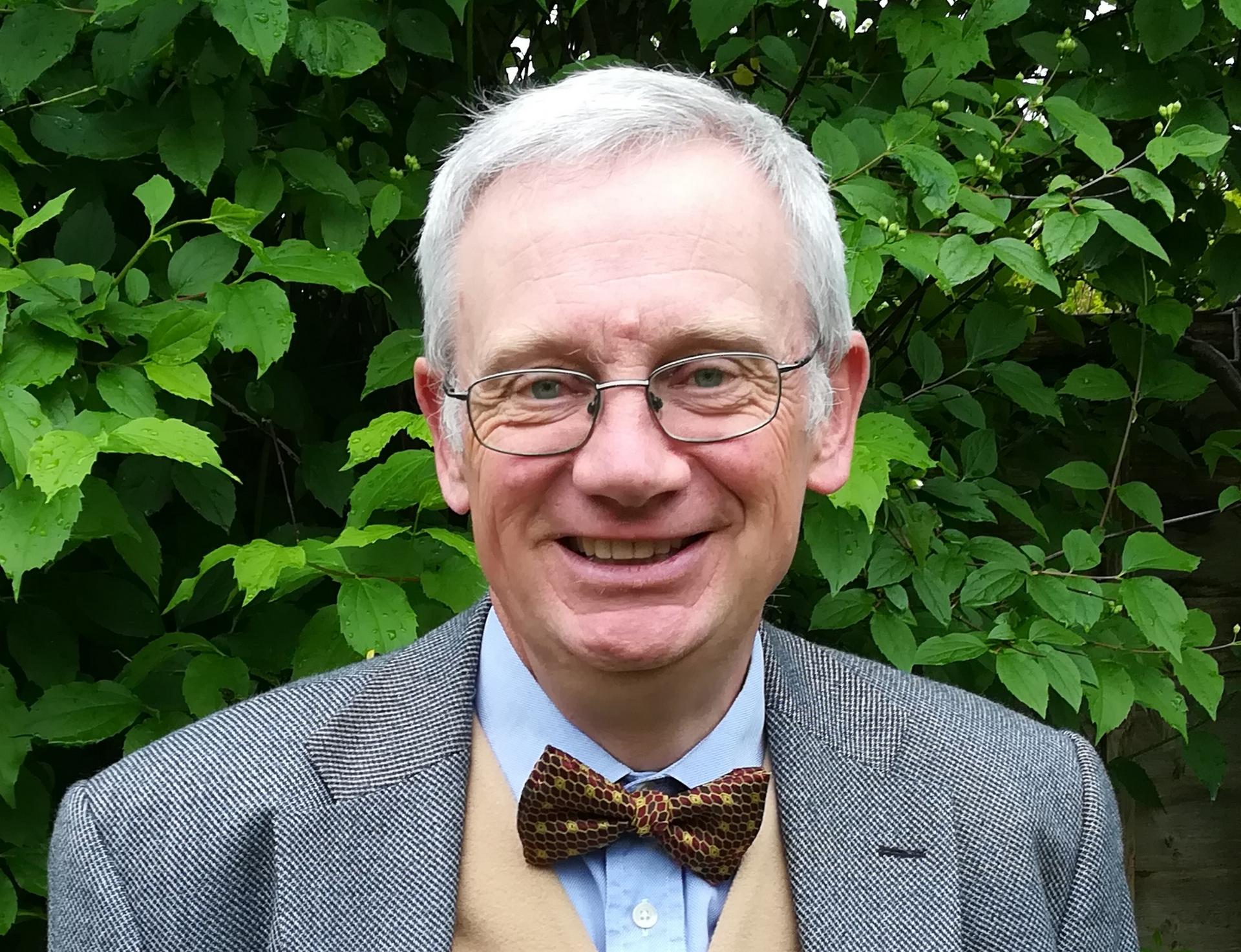I recently watched a great documentary on Channel 4, called ‘The Soldiers that Saved Britain’, made by British journalist Mobeen Azhar.
https://www.channel4.com/programmes/the-soldiers-that-saved-britain
Mobeen went on a mission to uncover his grandfather’s experience in the Second World War, visiting battlegrounds and archives.
It was fascinating to see his personal journey, struggling with the conundrum of why his grandfather volunteered to serve the colonial power.
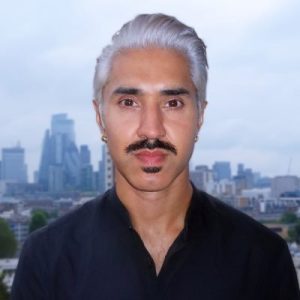
As one of the advisors for the programme, I was glad that my research has helped to publicize the South Asian contribution and help people Mobeen to find the truth.
I am left with a big question: how many are there like Mobeen in the world?
His grandfather Nawab Din was from Sialkot, he joined the Indian Signal Corps before the war, fought at Alamein and stayed on in the Pakistan Army after 47.
He was one of 2.5 million.
They drove trucks across the mountains from Persia to Kazakhstan -delivering supplies to the Soviet Union.
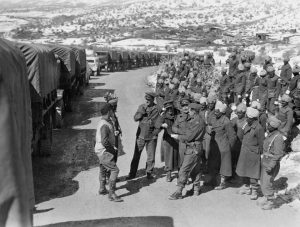
They liberated Keren and Addis Ababa in 1941
They fought across the Western Desert from Cairo to Tunisia, and in Palestine, Syria, Iraq
They captured Monte Cassino and forded the rivers of Italy
They strolled through Rome & Naples
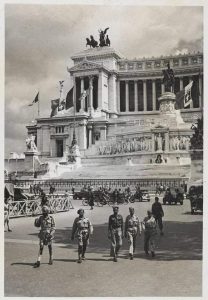
Like Nawab Din, they unrolled cables and set up telephones
They drove Sherman tanks and jeeps and Bren Gun carriers
They fired Bren guns and 25 pounders
They parachuted out of transporters over Burma
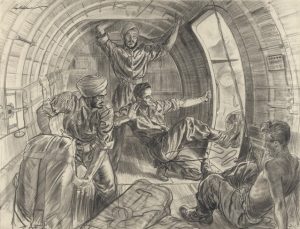
They built airstrips in the jungle
They were doctors and nurses and ambulance drivers
Over 1700 of them landed at Marseille in Christmas 1939 (see my first book The Indian Contingent) with a load of Punjabi mules
They worked as lascars – donkeymen and stewards and stokers in the Merchant Navy, sailing from Bombay and Glasgow and Cape Town throughout the Empire and beyond, carrying essential supplies. Hundreds of them supplied the beaches of Normandy after D-Day.
They were torpedoed and sunk, and 500 of them ended up in a special camp in northern Germany, liberated by the Brits in the spring of 45.
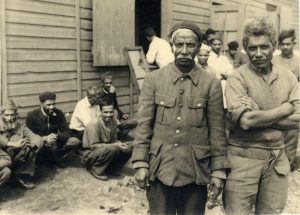
They joined the RAF after the Battle of Britain, and worked alongside white Brits in Bomber command and fighter command
Some few hundred joined the British Army and worked in the Pioneer Corps clearing bomb damage in London and doing construction work
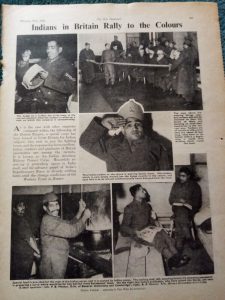
Others were part of the first wave of Bevin Boys.
They joined the Royal Indian Navy, helped to defend Glasgow and supported the landings at Sicily.
They were photographed, painted and, filmed & sketched, by their comrades-in-arms, their captors, the Red Cross, the press and by civilians. Their faces stare out at us from old newspapers, in archives and art galleries.
In some cases they recorded their memories in writing or audio, and you can hear their voices in the Imperial War Museum.
They are buried under Commonwealth War Graves Commission headstones across 4 continents,
They were captured by the Germans, Italians and Japanese, held in camps like Changi and Colditz and Avezzano.
500 of them escaped successfully to Switzerland in the summer of 44 – see my second book The Great Epinal Escape
In many cases they followed in their fathers footsteps. A previous generation had fought in Flanders, Mesopotamia and Megiddo, at Gallipoli and against von Lettow-Vorbeck in German East Africa.
They were Muslims and Sikhs and Hindus, Parsis and Christians from across British India and beyond. Punjab, Bengal, Bombay, Nepal, Sri Lanka, the NE, the NW, the south, the diaspora in Asia and Europe.
They were mostly born in the first quarter of the 20th century
They spoke Punjabi and Kannada and Bengali and Tamil. They learnt English and Japanese and German and Arabic and Russian
And there were women too, in the Red Cross and the WAC, in SOE and an ENSA troupe. Doing clerical work and spying and rolling bandages and packing parcels for POWs.
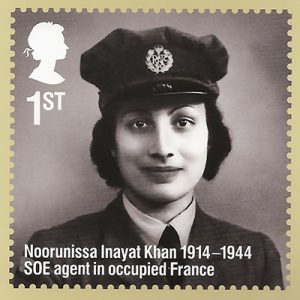
They were shipped around the world in huge numbers, as part of the imperial war effort. They worked alongside Brits, Aussies and Kiwis, white and Black GIs, men from across Africa, China and Asia
Sometimes they fell in love
They were part of a vast industry of war that consumed the planet for 6 years and more.
And at the end they went home, and two years later they were independent, some of them fighting against their erstwhile comrades in Bengal, Kashmir and Punjab
++++++
How many like Mobeen?
And then Mobeen. He is one of – how many? Let’s say each one of those 2.5 million men has 4 grandchildren, born in the last quarter of the 20th century.
That’s 10 million men and women like Mobeen. In Toronto, Michigan, Coventry, Paris and Berlin and Istanbul, Cape Town and Sydney, Lahore and Delhi and Cox’s Bazaar. All throughout the vast South Asian diaspora, speaking many languages including English, with contacts and cousins across the world
And maybe like Mobeen, they have a photo or two, a family story, a letter and a medal. And above all a question: What did my grandfather do? Why? Where?
Maybe like him, they grapple with the question of colonialism and fascism – did babajan make the right decision?
So what can we do?
Having researched and written two books about the Indian Army in the Second World War, I have knowledge and experience to share. There are plenty of other researchers and scholars out there, inside and outside universities.
There are databases, books, archives which can help people find their grandfathers.
This is a project to help individuals find their relatives, and also to restore the South Asian contribution to the general collective memory in the UK, South Asia and the world.
I would be most interested to hear your thoughts.

